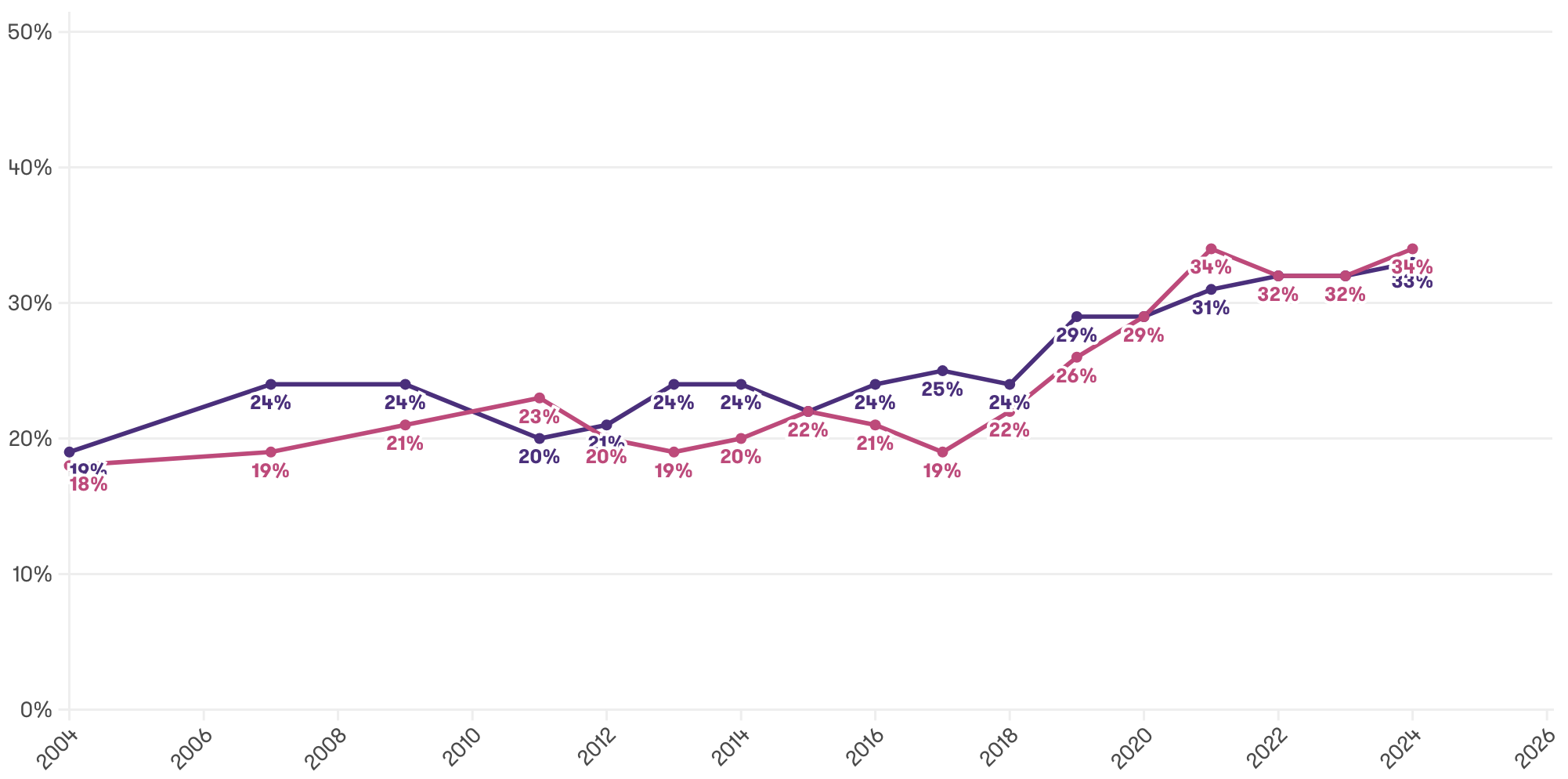Grant Thornton report exposes glacial pace of gender parity progress

Jill Hay
Data from Grant Thornton’s 20th annual Women in Business report shows that whilst the percentage of women in senior management roles in the UK and globally has increased over the last two decades, progress remains disappointingly slow. At the current rate, parity won’t be achieved until 2053.
In the UK, the percentage of women in senior management roles in mid-market** organisations has increased from 18% in 2004 to 34% today, with representation improving every year up until 2020, when progress stalled. The UK data is in line with global trends, which follow a similar pattern.
Coinciding with International Women’s Day, Grant Thornton is set to release “Pathways to Parity: 20 Years of Women in Business Insights”, marking two decades of dedicated research aimed at monitoring and measuring the representation of women in senior management roles within mid-market companies worldwide.
The report identifies three clear pathways for businesses to accelerate progress towards gender parity in senior management: assigning responsibility for inclusion and diversity (I&D) to both a C-suite member and a female senior leader; implementing a standalone I&D strategy with measurable goals; and offering flexible working arrangements.

Historical changes in percentage of women in senior leadership - UK (pink) and global (purple)
Impact of working styles
Flexible locations are having a positive impact on the ability of businesses to attract a more gender balanced workforce. Businesses that are primarily office-based are the only ones where the percentage of women in senior management roles drops below the average global benchmark. In the UK, those businesses with an office-based workforce have -11% less women in senior positions than those with a home-based or flexible model.

The research finds that there has been a dramatic shift back to office-based working among global mid-market firms in the past 12 months. Globally, 47% of businesses are now primarily office-based (compared to 36% last year) and 45% are hybrid (compared to 53% last year). This is potentially being driven by male CEOs – 50% of businesses with a male CEO are predominantly office-based, compared to 40% of female led businesses.
Collaboration and accountability from C-suite and senior female leaders
The percentage of women in senior management positions was found to increase when a member of the C-suite, of any gender, leads on I&D alongside a senior female leader. When this is the case within an organisation in the UK, the number of senior roles held by women surpasses the UK and global average by 4% and 5% respectively.
Jenn Barnett, director and head of inclusion, diversity and ESG at Grant Thornton UK LLP, said: “Our Women in Business research has been a significant contributor to the global debate on equity in the workplace for 20 years.
“While we’ve seen some positive change over that time, we also know that sustainable change takes an intentional effort and clear accountability from leadership at every organisation.
“Meaningful culture change can’t be tackled by any one person alone – even the CEO. When your board collectively has responsibility and buy-in for changes around I&D, and are held accountable, change will happen.
“This collective responsibility comes from understanding that I&D isn’t just a people priority, it’s a business priority.
“When leaders put I&D at the heart of their business strategy and take time to understand and address the invisible barriers to progression - that is when you start to see meaningful culture change.”
I&D strategy
Businesses without an I&D strategy or an ESG strategy have just 28% of global senior management roles held by women. This is in comparison to an average of 36%, in organisations which have both an I&D strategy and an ESG strategy in place. If there are clear indicators of I&D performance being measured, businesses will outperform the global benchmark.
Understanding progress and measuring success is a crucial part of any I&D strategy.
Jill Hay, tax partner at Grant Thornton in Scotland, said: “There’s an age-old adage: what gets measured gets done. That rings true when it comes to women in business, as much as it does with any other element of business performance.
“For example, gender pay gap reporting shows us that while there may be some women in senior management positions, there are not enough at that level or mid-management roles. This lack of pipeline means that if a senior woman leaves a position, there won’t be any other women coming up to take that role.
“This makes the situation of female management fragile which is why in businesses with low representation of women at senior levels, it is vital to monitor representation in the pipeline and to invest in measures that will help to support women to stay and progress through to senior levels.”








